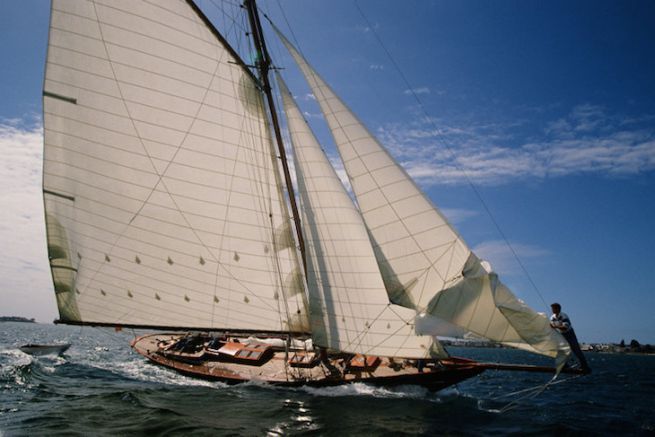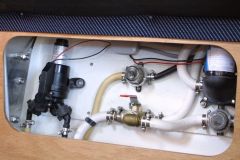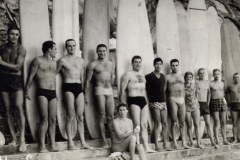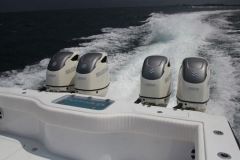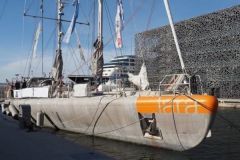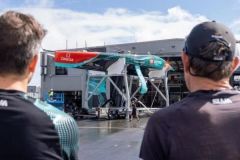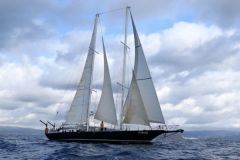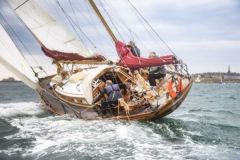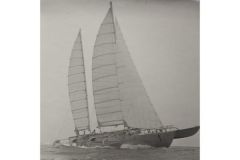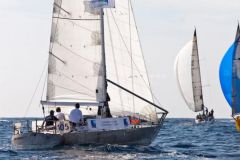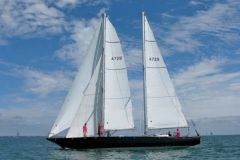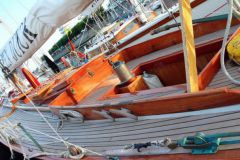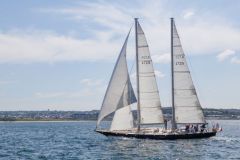Pen Duick and the Tabarly family
Pen Duick IV is designed by the Scot William Fife III, one of the most famous naval architects of the time. It was launched under the name of Yum in 1898 for Adolphus Fowler, a member of the Royal Cork Yacht Club, who wanted to make it run in the 36' linear miss class.
It was in 1938 that Guy Tabarly bought it from the Lebec family in Nantes. This is the beginning of yachting in France and yachts are few in number. It is on board that he teaches his son, Eric, to sail. Due to a lack of inactivity - it was the Second World War - the boat's hull was damaged and Guy, not having the means to restore it, decided to sell it. But it is finally Eric Tabarly who will become the fifteenth owner at the age of 21.
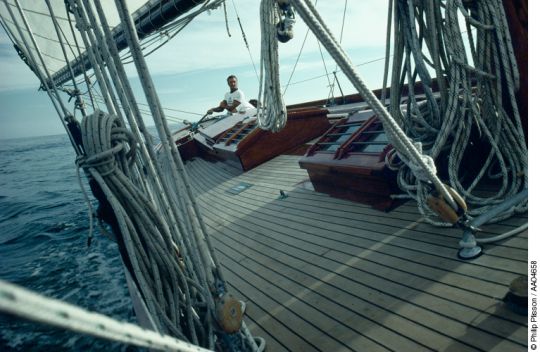
A first "rescue"
In 1958, Pen Duick's wooden hull was very damaged and irreparable. Eric, who wanted to keep it in shape, decided to use it as a mould to make a new hull. Over the wooden hull of the auric rigging cutter, it successively lays layers of glass fabric and polyester resin. Pen-Duick thus became the longest polyester hull of the time and Eric Tabarly was a pioneer by testing an innovative technique, never seen before!
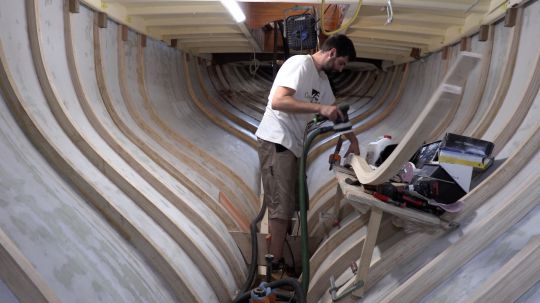
Then a second one...
In an innovative approach, Eric Tabarly starts racing and for each one builds a new boat. Thus he abandoned Pen Duick, who was once again offered to the bad weather for too long. In 1983, the boat was towed from Crouesty to St-Malo by Pen-Duick VI to enter Raymond Labbé's construction site. Six years pass, during which time repairs are carried out, at the pace of the skipper's finances. This refit saw the appearance of a new deck, new engine fittings and its original hull shapes.
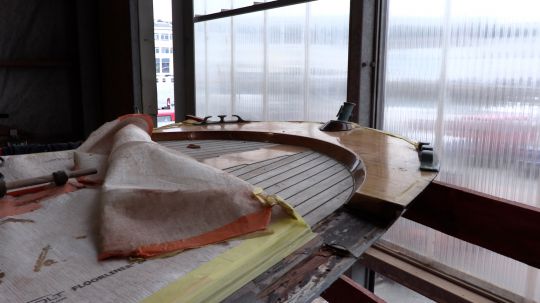
A ceremonial ship
Pen Duick was launched again in 1989 during the Voiles de la Liberté, with financial support from the City of Rouen. Based in Bénodet, he continues to sail in southern Brittany. Then, he took part in Mediterranean regattas in Monaco, Saint-Tropez, or Cannes, alongside plans from the same architect. It will celebrate its 100th anniversary in Bénodet in 1998, a celebration that will last 3 days! It was during a convoy to Ireland that his skipper disappeared on the night of 12 to 13 June 1998.
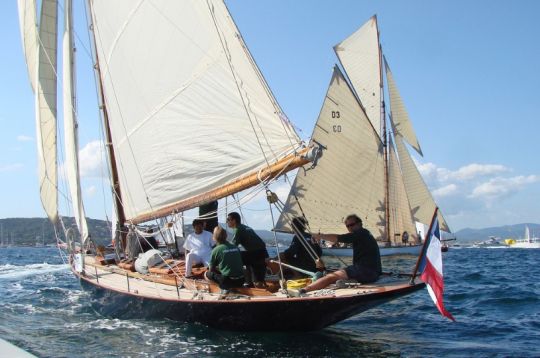
A boat classified as a Historic Monument
Since Eric Tabarly's death, Pen Duick has belonged to Jacqueline - his wife - and Marie - his daughter. Since April 5, 2016, it has been classified as a Historical Monument because of its historical interest based on its particular role in the work of Eric Tabarly. It is also thanks to this title that some State bodies have been able to cover part of the maintenance costs.
The other costs must be covered by private funds and it is for this reason that the Pen-Duick Association was created, whose objectives are to ensure the management and proper use of both public funds, resulting from the Pen Duick classification and as a historical monument, and private funds. The Eric Tabarly Association is only responsible for the maintenance of the ship and not for any heavy repairs that may take place.
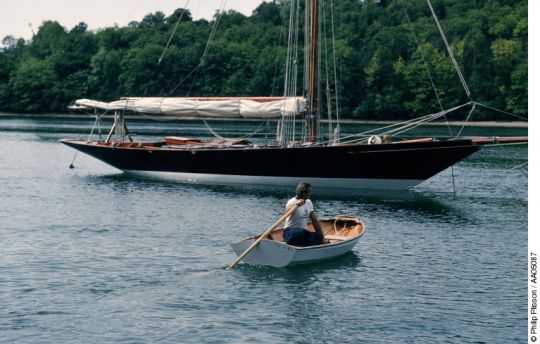
A crowdfunding to save Pen Duick
In 2014, fractures are revealed in the ship's frame, mainly related to the condition of the 1958 polyester laminate, which has disintegrated over the entire hull. The resin is almost crystallized everywhere and the fabrics are sometimes dry, without adhesion on the previous composites. The decision was then made to disarm it in 2017.
The wooden structure and polyester hull must be replaced while respecting the technical choices made in 1958 by Eric Tabarly and adapting them to modern shipbuilding means and techniques. The Guip site was therefore chosen to undertake this long work, supported by Sicomin for biosourced resins and Saertex for innovative fabrics.
The total amount of the works is ?650,000, of which ?400,000 is covered by the State (Morbihan department and Brittany region). To raise the remaining ?250,000, Jacqueline and Marie Tabarly launched a participative financing operation with individuals and companies, offering coins from Pen-Duick in exchange.
To raise awareness, the auric cutter will be displayed in the official village of La Route du Rhum-Destination Guadeloupe in Saint Malo from 24 October to 4 November 2018 in the presence of members of the Pen-Duick association.
